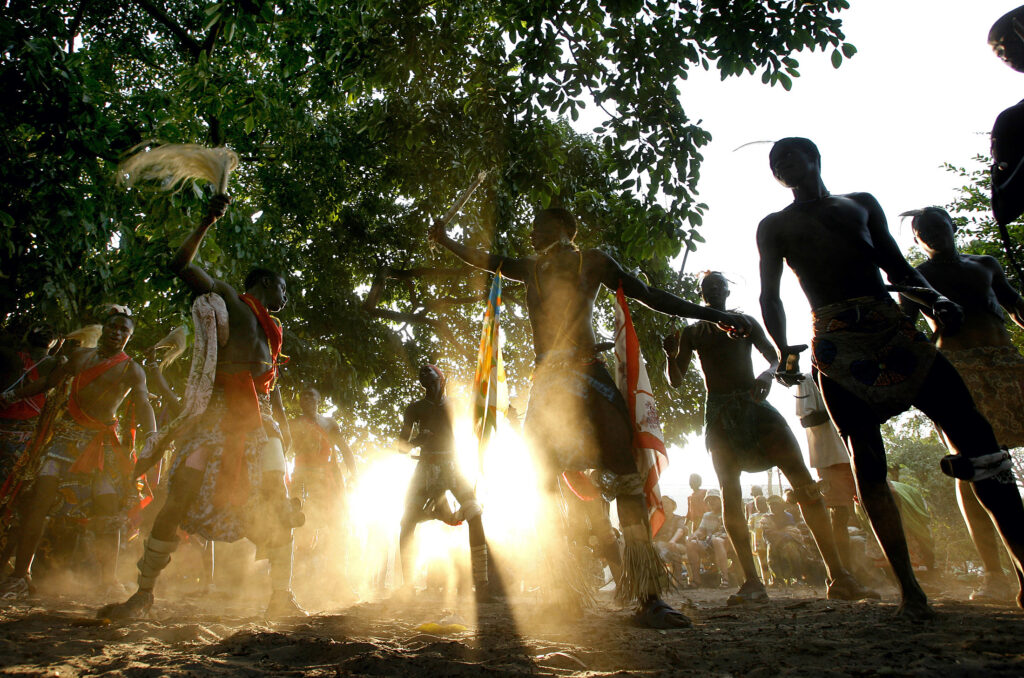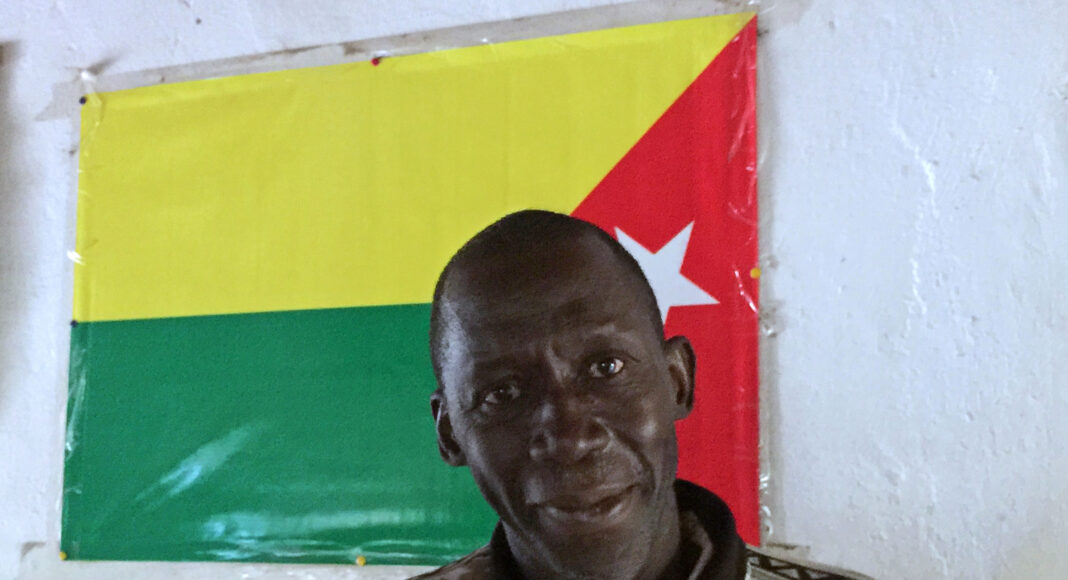By Aïda Dramé
Since 1981, southern Senegal’s Casamance region of has been stuck in the grip of what is often called a “low-intensity” conflict between the Movement of Democratic Forces of Casamance (MFDC), a secessionist rebel group, and the Senegalese government.
The origins of this crisis are in the French colonial classifications that pit the Diolas, who were discriminated against for their non-Abrahamic belief system and rural lifestyle, against the Wolof, who were stereotyped as “evolved,” because they were “Muslim” and “urban.” (1)
Forty years after the conflict sparked, despite some attempts to restore harmony, this region is in a “no war, no peace” situation, making this crisis the oldest guerrilla war on the continent. All signs point to the failure of transitional justice in Casamance.
Traditional conflict resolution has been ineffective
One of the main methods used to end the Casamance armed conflict relies on the tradition of kinship jokes between the Diolas and the Sérères. Joking kinship is defined in anthropology as “a relationship between two people in which one is by custom permitted, and in some cases required, to tease or mock the other, who in turn is required not to take offense” (2).
This traditional mechanism was based on the moral imperative that the Diola and the Sérère have this joking relationship, they should live in peace and not fight each other. State institutions promoted the kinship ties over the years, for example, the Festival of Origins organized by Saliou Bambou, then Governor of Fatick, in collaboration with the Amicale des Sérères, in December 1993. Artistic performances conveyed messages of peace and national unity to a large Diola and Sérère audience.
In his opening address, Governor Sambou described the delicate situation in Senegal and the “partisan violence,” which the cultural festival was to address through a “return to the roots.”
He illustrated this through the myth of Aguène and Diambogne, which alluded to the cousinship between the Diolas and the Sereres. For Governor Sambou, if the Sérères belong to Senegal, the same is true of the Diolas. The festival’s success eventually led to the establishment of the Cultural Association of the Aguéne and Diambogne (3).
The following year, in 1994, then-President Abdou Diouf organized a colloquium on the cultural convergences within the Senegalese nation based on the thoughts and works of Cheikh Anta Diop and Léopold Sédar Senghor. During the symposium, speakers made statements to encourage unity, like “you see that everyone is a brother and that the Senegalese people existed before the Senegalese nation” or “the symposium on cultural convergences within the Senegalese nation will magnify, Senegalese national unity built from the mixing of our peoples throughout history” (4). These hammered home the notion that the Casamance people should not feel distinct from the other Senegalese peoples, and that secession was a disastrous alternative.
As another traditional mechanism for resolving the conflict, the sacred wood ceremony, which aims to formulate prayers for a definitive return to peace, was also performed.
Despite their historical contemporary uses, analysts like Niagalé Bakoyoko and Fahiramane Rodrigue Koné argue that these mechanisms are more often aimed at preventing or resolving minor conflicts. As a result, their impact at the national, regional and international levels is difficult to measure. Moreover, the cultural specificity of these mechanisms reduces them de facto to the communities which have a history of using them, without offering any concrete prospects for expansion or institutionalization (5).
When using traditional conflict resolution mechanisms, it is difficult to distinguish between civilians and combatants—a fundamental principle of international humanitarian law—which can turn the peace process upside down. Thus, in the Casamance crisis, these mechanisms have no real impact. Moreover, why would one use tradition to resolve a conflict that was not triggered by traditional factors?

A rebellion that can’t win and a government that can’t make peace
One of the main obstacles to the peace process in Casamance is the disparate nature of the rebellion. The MFDC is divided into two blocs, the Southern Front and the Northern Front. These differences within a once-united rebellion began to emerge following the Cacheu and Banjil Agreements in 1992, which sought to consolidate the first cease-fire signed by Sidy Badji and the Senegalese government.
Abbé Diamacoune condemned the signing of this agreement because he considered that it did not address the main demand of the MFDC, namely the independence of Casamance (6). Sidy Badji, then leader of the rebellion at the time, regrouped with his followers under the northern front and opted to negotiate.
In southern Casamance, Abbé Diamacoune, Salif Sadio and Léopold Sagna set up their own unit and adopted a defensive strategy, maintaining their guerilla fighters (7). Abbé Diamacoune retained his links to the church, creating tensions within the southern front because of the impression he was more inclined to negotiations than the military option. This led to him gradually losing his prestige in the Maquis (8).
This division benefited the Senegalese government, which juggled a wait-and-see attitude with repression. Regardless of the government in power, though, Senegal has never considered the option of granting independence to Casamance. As soon as former President Abdou Diouf took office, he put in place a number of military campaigns that resulted in few agreements, notably those of Cacheu and Banjul. Those agreements have been criticized by some as ineffective.
Former President Abdoulaye Wade opted for mediation more than his predecessor but nevertheless agreed with him on maintaining the military hold on the region. Finally, under the current administration of Macky Sall, the Senegalese army has been conducting raids against the MFDC since January 26 2021.
Thus, in the words of Jacques Ziller, “the Senegalese Jacobin state, heir to the French tradition, is a unitary state: a state with a single center of political and governmental impetus in which all individuals placed under its sovereignty obey a single authority.” (9)
The loss of internal and external support has also hobbled the Casamance rebels. Iraqi and Libyan support for them has never been more than superficial and limited. In the case of the MFDC, a 2010 Iranian arms shipments via the Gambia allowed the MFDC to gain the upper hand against the Senegalese army for a short period of time, but it also revealed the rebels’ dependence on outside actors.
Since the conflict began, the MFDC has never succeeded in expanding its audience to the whole of Casamance, and have only really found favor in the Diola areas. Historian Jean Claude Marut argues that this is due to the rebels’ wait-and-see attitude towards the daily concerns of the populations they claim to defend, their intransigency toward alternatives to secession, their criminal activities, aggression against civilians, looting of stores, vehicle robberies, internal settling of accounts, corruption, and also a weak unifying narrative that has been criticized as conspiracy (10).
For all these reasons, many wonder when there can be definitive peace in Casamance. Should independence be granted to the people of Casamance or should Senegal try to set up a federal system in which the various competencies would be shared among different federated states, which would make Casamance feel less left out?
In any case, the Senegalese nation-state is in crisis.
- Severine Awenengo Dalberto, “Le conflit casamançais. Matrices, émergences et évolutions”, Revista de Politica Internationalista, 2008.
- Radcliffe-Brown, A.R., “On Joking Relationships”, Structure and Function in Primitive Society, London : Cohen and West, 1952.
- Ferdinand de Jong, “A Joking Nation : Conflict Resolution in Senegal”, Canadian Journal of African Studies, 2005.
- Tambadou, Moustapha, ed. Nd, “Les convergences culturelles au sein de la nation Sénégalaise”, Proceedings of the Kaolack Colloquium, Ministry of Culture and French Cooperation, June 8-13, 1994.
- Niagalé Bakoyoko, Fahiraman Rodrigue Koné, “Les mécanismes traditionnels de gestion des conflits en Afrique subsaharienne”, Research Report n. 2, Raoul Dandurand Chair in Strategic and Diplomatic Studies, FrancoPaix Center, June 2017.
- Martin Evans, “Senegal: Mouvement des Forces Démocratiques”, Africa Programm, December 2004.
- Vincent Foucher, “War by Other Means ? Civil Society in the Peace Process in Casamance”, Political Reasons, 2009.
- Jean Claude Marut, “Solution militaire en casamance”, Politique africaine, n. 58, June 1995.
- Jacques Ziller, Administrations comparées : Les systèmes politico-administratifs de l’Europe des douze, Coll.Domat Droit Public, Paris, Edition Montchrétien, 1993.
- Jean Claude Marut, “À l’ouest quoi de nouveau ? Les obstacles à la paix en Casamance”, Cahiers d’OutreMer, July-September, 2011.

